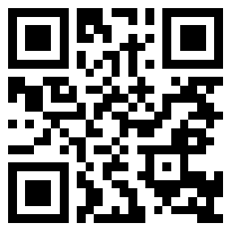把合同条款放在链接文档中是否违反澳大利亚Consumer Law ?| 澳法评
把合同条款放在链接文档中是否违反澳大利亚 Consumer Law ?
根据澳大利亚Consumer Law第18条第一款,任何人在贸易或商业中均不得从事具有误导性或欺骗性或可能导致误导或欺骗的行为。但是,如果商家把合同放在PDF文档中是否构成误导性或欺骗性的行为呢?
举例来说,我们在互联网上购买一个软件,在购买页面上通常会显示你是否同意合同条款。我们通常会在旁边看到一个可以下载的PDF文档。这个文档里会包含合同条款以及排除责任条款。但是,很多人并不会特意下载PDF文档,仔细阅读之后再点击同意。大多数人会直接点击同意。这种情况下,商家并没有违法披露义务(因为每个人都可以下载合同条款)。这种情形下,商家可能属于“保持沉默“的行为。这种“沉默”是否构成了误导性或者欺骗性的行为?

根据2001年的经典案例约翰逊·蒂尔斯私人有限公司诉ESSO澳大利亚有限公司(JOHNSON TILES PTY LTD v ESSO AUSTRALIA LIMITED [2001] FCA 421),默克尔法官(Merck J)指出,沉默在两种情况下属于具有误导性和欺骗性行为。这两种情况如下:
1.“沉默”是指不公开,所以“沉默行为”会产生误导。沉默是导致行为具有误导性或欺骗性的因素。在我们上面的举例中,合同以PDF格式显示,新客户可以选择通过单击“我同意”之前下载来进行查看。因此,商家公开了合同条款,并不属于不公开的行为。
2. 仅是沉默行为本身就构成误导或欺骗,并且这个沉默必须是故意的。将合同条款和排除条款放到PDF文档中,并不是故意要误导和欺骗每个新客户。这是因为每个新客户都可以随意下载以及阅读条款。因此,并不会构成误导和欺骗。
虽然合同条款以及排除责任条款在PDF中‘隐藏’,并且很多新客户在点击同意前并没有阅读条款,但是商家对合同是进行了完整的披露。在实践中,商家会将文件中的重点条款以及排除责任条款使用放大字体或更改字体颜色来提醒消费者。在这种情况下,商家并没有“保持沉默”,也没有进行误导性或欺骗性的行为。所以,商家把合同放在PDF文档中并没有违反澳大利亚《消费者权益保护法》。所以,大家在购买前一定要仔细阅读PDF 中的合同条款。
Does the Company Placing the Contract in the PDF Violate the Australian Consumer Law?
According to section 18(1) of the Australian Consumer Law, a person must not, in trade or commerce, engage in conduct that is misleading or deceptive or is likely to mislead or deceive. However, does it constitute misleading or deceptive conduct if the business puts the contract in the PDF document?
For example, if we buy an Application on the Internet, the purchase page usually shows whether we agree to the contract terms. We usually see a downloadable PDF document next to it. This document will contain contract terms and exclusion clauses. However, many people will not download the PDF file and read it carefully before clicking “I agree”.

Most people will just click to agree directly. In this situation, the business does not non-disclosure (because everyone can download the contract). However, the company may constitute "silence". Does this "silence" constitute misleading or deceptive behavior?
In the case of JOHNSON TILES PTY LTD v ESSO AUSTRALIA LIMITED [2001] FCA 421, Merkel J noted that putting to one side the issue of a duty to disclose, silence has been recognised as justifying a claim of misleading and deceptive conduct in two situations. I described those two situations as follows:
Firstly, silence is part of a broader range of conduct which becomes misleading due to non-disclosure. The silence was the element that resulted in the conduct is misleading or deceptive. However, in this case, the exclusion terms are showing in a PDF form, and new customers have the option of viewing by downloading it before clicking the option “I agree”. Therefore, the business discloses the exclusion terms.
Secondly, silence alone is relied on as constituting misleading or deceptive conduct. The silence must be intentional or deliberate. Put the contract terms and exclusion clauses in the PDF document instead of deliberately misleading and deceiving every new customer. This is because every new customer can download and read the terms at will. Therefore, it will not constitute misleading and deceit.

Although the contract was “buried away” in a PDF, and many new customers did not read the terms before clicking to agree, the business discloses the contract. In practice, companies will use enlarged fonts or change font colors to remind consumers of key clauses and exclusion clauses in the document. Thus, the company does not "keep silent", nor did it conduct misleading or deceptive. Therefore, putting the business contract in the PDF file does not violate the Australian Consumer Law.Thus, everyone should remember to read the terms in the PDF contract before clicking "I agree".








 +61
+61 +86
+86 +886
+886 +852
+852 +853
+853 +64
+64


